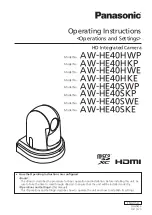
The Falcon4 Camera Overview
Falcon 4 Camera User's Manual
•
11
Definition of Blemishes
•
Dark pixel defect: Pixel whose signal, in dark, exceeds 500 DN.
•
Light pixel defect: Pixel whose signal, at nominal light (illumination at 50 % of the linear
range), deviates more than ±24 % from its neighboring pixels.
•
Cluster defect: A grouping of at most 2 to 5 pixel defects within a sub-area of 3*3 pixels.
•
Glass Spot defect: A grouping of 9 pixel defects within a sub-area of 3*3 pixels.
•
Column Defect: A vertical grouping of more than 20 contiguous pixel defects along a single
column. Must be a minimum of 5 good columns between defective columns. If column defect
count is >0 then row defect quantity must = 0. Column defect concealment will be applied
for defective columns.
•
Row Defect: A horizontal grouping of more than 20 contiguous pixel defects along a single
row. Must be a minimum of 5 good rows between defective rows. If row defect count is > 0
then column defect quantity must = 0. Row defect concealment will be applied for defective
rows.
•
Test conditions Temperature: 40 °C.
•
Integration Time: 12 ms.
Sensor Block Diagram and Pixel Readout
Pixels are read from left to right, top to bottom. The data for each line is transferred from the
sensor to 7 CLHS data lanes. CLHS is a packet-based protocol therefore the concept of taps or tap
geometry does not apply; the frame grabber reconstructs the images based on the information
contained in the packet, regardless of which data lane is used for the transfer.
Figure 4: Pixel Readout of the Falcon 4 camera.
Notes:
•
As viewed looking at the front of the camera without a lens. (The Teledyne DALSA logo on
the side of the case will be right-side up.)
Preliminary














































